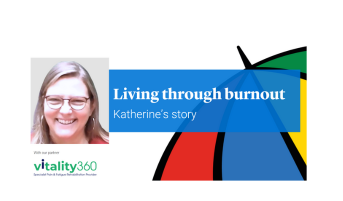Employees who experience high levels of toxic behaviour at work are almost eight times more likely, than those who don’t, to experience burnout symptoms according to the McKinsey 2022 survey.
Burnout is a multi-faceted syndrome characterised by three primary dimensions, as defined by the WHO (ICD-11) :
1. Feelings of exhaustion, 2. Cynicism and detachment, 3. Reduced professional efficacy.
The formal definition is:
“Burnout is a syndrome conceptualized as resulting from chronic workplace stress that has not been successfully managed.” It is seen as an occupational phenomenon and not classified as a medical condition.
Burnout: A wellbeing partnership approach
The wellbeing partnership resets the relationship across both the employer and employee to take care of each other and to make sure everyone can do well, with more sustainable outcomes for all.
The partnership means sharing the responsibility for wellbeing beyond traditional roles, allowing for both parties to benefit from healthier rights, while holding each other’s responsibilities to account.

Support for burnout
Burnout support and guidance to help you
Katherine's story
Living Through Burnout: Katherine's Story

Katherine was working in a health and safety role for a hotel when she experienced extreme symptoms of burnout. She tells us her story and how the support that she received helped her through and what could help others, should they ever be in a similar position.
A commitment to better wellbeing
Louise Aston, Mental Health and Wellbeing Campaign Consultant
“A true partnership between employers and employees creates a culture that prevents burnout by creating a safe and fulfilling environment that protects physical, emotional, psychological, economic and social aspects equally. For employees, it’s about taking personal responsibility for bringing their best selves to work, by taking care of their health and wellbeing, staying positive, and contributing to a positive workplace culture. This partnership with everyone having rights and responsibilities, is crucial for tackling negative behaviour.”

Work related stress factors webinar
Watch our webinar as we discuss work related stress factors and how this can contribute to poor health and burnout. We also look at ways in which work related stress can be prevented and supported, to ensure employees can work to their full potential.
Work related stress factors webinar

Additional wellbeing support for employees and their families
We put the individual at the heart of everything we do. We see the person not the illness and that’s why our outcomes focussed approach to wellbeing focuses on enabling employees to Be Well. Get Better and Be Supported in the moments that matter most.

